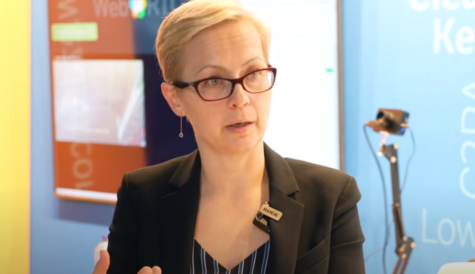
After more than 40 years of operation, DTVE is closing its doors and our website will no longer be updated daily. Thank you for all of your support.
Q&A: Jan Frelek of Redge Technologies on the opportunities presented by Dynamic Ad Insertion
Jan Frelek, the board member at Redge Technologies, responsible for business development, talks to Digital TV Europe Editor, Stuart Thomson, about the opportunities presented by Dynamic Ad Insertion – is time for DAI now ?

Jan Frelek
DTVE: DAI, Dynamic Ad Insertion, isn’t it too complicated ?
Indeed, it is a bit of a challenge. But not a rocket science as it has been operated in Europe and USA for a decade. Albeit not massively.
Technology issues or scarce demand?
Technology is not an issue. Of course, it takes a decent technology vendor – like Redge Technologies – because dealing with real live TV leaves no room for imperfection. But with the current state of technology – hardware capacities, IP networks and standardizations – it is perfectly doable.
The challenge is more on the side of demand from marketers and content owners. The legacy advertising model, based on broadcasting and GRPs, has been working well. It is easy. People know how to use it and get results. It is very well organized. And the big money at stake scares people away from disruption. So there is inertia.
Who could help the DAI quest ?
Uncle Google, auntie Facebook and time. The new generation of marketers, the new culture of digital marketing, develop over time. For these ladies and fellows, the logic of personalized ads, its operations, tooling comes easy. They know how to do personalized ads, how to measure them and how to prove their effectiveness and profitability. Daily bread – and not some aliens from outer space.
These competencies are developed along more and more of high street life going digital. So, marketers follow. And spend their money on digital ads – personalized, accurate, sharply measured. For them plain old broadcast ads seem a waste hard to swallow. Like dropping a nuke to hit one man.
So, the modern marketers shift their budgets from broadcast TV ads to personalized unicast ads, predominantly to Google and Facebook. And as marketing budgets are relatively fixed, the duvet comes short on the broadcast side.
DAI is supposed to pull the duvet back.
By switching GRPs off in favour of CPMs?
Slowly but surely. DAI is just an enabler for ad product proposition which would appeal to marketers.
Typically, the first step is to monetise zero-GRPs and spare slots of unsold broadcast inventory or auto-promotion. It’s a safe move. It also allows to learn how to make DAI – as we are all pretty early on the learning curve. To provide any reasonable reach to marketers such a move is only for big TV players.
The next step would be to tackle the valued GRPs. The prevailing business model is yet to be defined. I would bet on the “premium-GRP” approach which leaves the master logic of GRPs intact while making more money out of it by limited personalization. To give example: a generic broadcast ads of ACME superstore priced at 100 would cost 120 if women receive the vision of vegetables and men of beer in the ACME superstore. We can add to it another segmentation criteria such as geography or income.
The ultimate all-CPM universe is a bit further. It should come along with the disintegration of the broadcast live TV lifestyle into VOD habits and Internet video delivery. Telcos, streamers, tiktoks-of-the-world make this transition happen. It’s a generational change.
And the rise of FAST – friend or foe of DAI ?
FAST is AVOD easy way. Yes, it is live TV. But it’s not broadcast live TV. The content proposition, the underlying technology of video distribution, the monetisation models are all from the VOD realm. With super easy UX on top, well known from plain old FTA TV.
FAST takes the audience away from live broadcast TV, just like any other video service from the online era. And DAI – or SSAI – technology is the critical enabler here.
And consumer – friend or foe of DAI ?
Where the beer ad would make me skip the show, the ad of nalevka would make me visit the ACME superstore. And you – and you and you – would easily identify a drink which would make you visit the ACME superstore and buy it. And we would send a thank-you-letter to the advertiser for letting us know about such a great drink opportunity.
So consumer should be DAI’s friend. But…
But there are sensitive preferences. And they vary from person to person, from society to society of various granularities. Plus some people feel uncomfortable being watched, for whatever reasons. We call it privacy issues. If these are mistreated, it will push back personalised ads, including DAI.
However, we should be positive about it as the online guys do a pretty good job of it. Although with stumbles like misusing the personal information in the political elections. We, the mankind, still have to figure it out right.
Or maybe we should go simple and create a Universal Personalisation Register where each consumer would check and update its profile.
Such Register would require a universal identity across a single geography.
Indeed. I think it’s a practical must even for personalized ads without such Register.
If every major content house develops its own universe of users, each consumer appears in disconnected parallel worlds. All the rules about capping, repetitions, sequences etc. do not work. And it’s not an appealing case neither for consumers nor for marketers. It diminishes the value of personalised ads.
There are countries – like Germany – where majors content houses have allied to develop a single consistent identity universe for the market. But still, it’s a seldom case. The industry must learn.
Apparently, technology is not an issue for DAI…
Apparently. To make DAI fly technologically it takes proper encoding for stream curation aligning the ads video with the payload. It takes Manifest Manipulator to seamlessly ingest personalized ads into unicast video streams. It takes Inventory Manager to manage DAI capacity in a smart manner reducing the wasted load on Manifest Manipulator, Ad Server and CDN. These are the tools on the side of Video Delivery Platform.
On the ad tech side it takes Ad Server or SSP to manage the personalized campaigns. And it takes DMP to manage personalized profiles and consents.
All these pieces are in place and available from the reputable technology platform such as Redge Media.
And it takes SCTE-35 signaling from live TV playout…
Very much so. The machines need to know when the ad break begins and ends in order to substitute ads accurately. SCTE-35 is becoming a commodity, but still there are gaps here.
But even if there are no SCTE-35 markers from the source, the case is not lost. There is Video Content Recognition technology – we may call it VCR (once these letters no longer mean cassettes with magnetic tapes). VCR in real time analyzes live video stream, detects patterns and changes and retrofits SCTE-35 markers. It is part of Redge Media Encoder. The accuracy of retrofitting is well over 90%.
Please note that VCR will do the job not only for DAI. It will also dramatically improve the accuracy of Catch Up TV. No more chopped leads or leftover tails or programs. It will make consumers extremely happy.
Is DAI measurement and reporting an issue?
The critical part of DAI is measurement and reporting. It is the currency, so it needs to be accurate and trusted by marketers who sponsor the show.
There is no ultimate standardisation here, despite the attempts in MPEG DASH. Instead there is a fragmented landscape of devices, networks, solutions and providers which do not guarantee the quality of information. So the business is likely to be underpaid or overpaid – hard to say the direction or the volume.
The industry should welcome the initiative of DVB and IAB to ultimately standardise the reporting for online video, including DAI.
If I was in video business, should I care for DAI now?
Of course – better safe than sorry. Come to a reputable technology vendor – like Redge Technologies – who will be happy to assist you in this transformation and business opportunity.
This is sponsored content.


